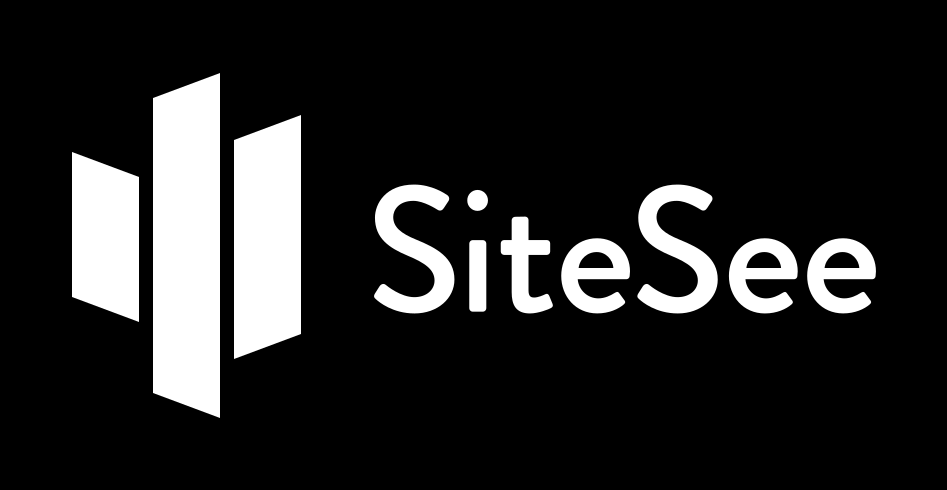The INS Group & SiteSee
The INS Group has collaborated with SiteSee, an AI-based digital 3D model platform, to deliver top-notch digital models captured by our expert drone teams. SiteSee brings together a team of Robot Vision Engineers, Physicists, Mathematicians, and AI researchers who have leveraged their knowledge and expertise to develop a system that outperforms all other similar platforms in the market.
AIM is an innovative workflow application created by The INS Group to efficiently track even the most intricate telecom infrastructure projects. With AIM, your sites are brought to your desktop, utilising the powerful capabilities of the SiteSee platform.
The advanced AI of SiteSee
AIM leverages SiteSee and the power of Artificial Intelligence (AI) technology to automatically detect on-site assets, including antennas and Earth Remote Sensing (ERS) equipment, and provide azimuth and tilt information. The SiteSee AI algorithms can swiftly process large volumes of data to identify and categorise assets, minimising the need for manual inspection and analysis.
This automation significantly improves the speed and accuracy of asset identification while providing precise information about their orientation. In various industries, such as telecommunications, the correct orientation of antennas and equipment is crucial for optimal performance.
In addition to identifying assets, our AI algorithms can detect any anomalies and irregularities in asset orientation, allowing us to identify potential issues and address them proactively before they develop into significant problems. This proactive approach can reduce downtime and maintenance costs while enhancing the overall performance of on-site assets.
Overall, by integrating AI technology into our processes, we can provide rapid and accurate identification of on-site assets, ultimately improving operational efficiency and reducing costs.
Our partnership with SiteSee provides AIM with the following added benefits:
1. One of the advantages that our partnership with SiteSee brings to AIM is the availability of state-of-the-art reality models. These models are highly precise and detailed representations of real-world objects and environments, offering a wide range of applications across various industries.
2. Interactive 360 panoramas to provide an engaging and interactive way for viewers to experience and explore a physical location or environment. Our 360-panorama technology creates a seamless and immersive 360-degree view by stitching together multiple photos or video frames captured from a single location. Recent advancements in technology have allowed for higher-resolution images, smoother stitching, and enhanced integration with other digital technologies like virtual reality.
3. Allowing you to measure hard-to-reach and out-of-bounds locations by providing a virtual representation of the physical environment. With a digital model, measurements can be taken from any location in the model, regardless of accessibility. This is particularly useful for areas that are difficult or unsafe to access, such as high-rise buildings, bridges, or cliffs. By measuring these areas digitally, it is possible to obtain accurate data without the need for physical access or putting personnel in harm's way.
4. Remove dangerous two-man climbs or expensive MEWPs. Digital Models are particularly useful for areas that are difficult or unsafe to access, such as high-rise buildings, bridges, or cliffs.
5. 2D Orthomosaic more accurate than Google Maps for true 1:1 CAD drafting
6. Improve environmental sustainability by providing a virtual representation of the physical environment.
Simulations as digital models can be used to simulate various scenarios and assess the impact of potential changes to the environment. For example, a construction project can use a digital model to evaluate the feasibility of a design and identify potential issues before construction begins. Similarly, environmental monitoring can use a digital model to simulate the impact of different scenarios on the environment and identify potential risks.
Digital models and telecoms.
Assign ICNIRP to SDN standard for quick analysis.
ICNIRP guidelines are widely accepted as the standard for safe exposure to EMR. These guidelines specify exposure limits for various frequency ranges and provide a framework for assessing the potential health risks associated with EMR exposure.
By assigning these guidelines to an SDN standard, it is possible to automate the process of analysing potential EMR exposure. The SDN can monitor the EMR levels in real time and compare them to the ICNIRP guidelines to determine whether exposure levels are safe or exceed the recommended limits.
This approach offers several benefits.
1. It allows for quick and efficient analysis of potential EMR exposure, reducing the need for manual inspection and analysis.
2. It provides a real-time monitoring system that can detect potential issues as they arise, allowing for prompt corrective action to be taken.
Finally, it ensures compliance with ICNIRP guidelines, which are widely accepted as the standard for safe EMR exposure.
Create proposals for new site upgrades.
The SiteSee platform creates a virtual model of the existing site, along with accurate data and measurements. This virtual model can be used to simulate and test various scenarios and proposals for upgrades by adding or removing elements and testing its impact on the surrounding environment such ICNIRP. This information can be used to optimize the design and placement of new elements.
In the upcoming months, we will delve deeper into the many benefits of AIM powered by SiteSee, including the use of virtual models. We will explore how these cutting-edge technologies can enhance the efficiency and accuracy of various processes in industries such as telecommunications, construction, and environmental monitoring.
The INS Group - https://theinsgroup.co.uk
SiteSee - https://www.sitesee.io


